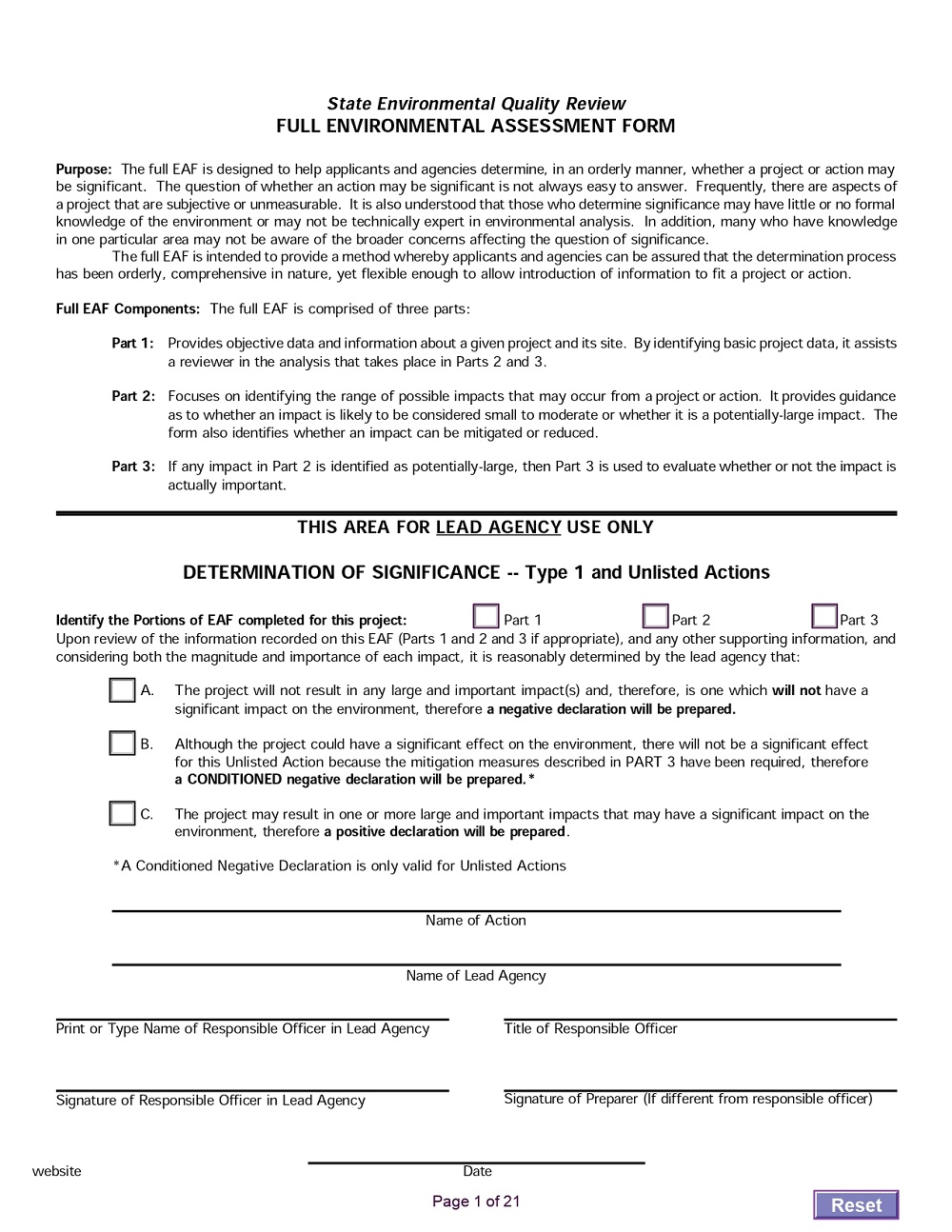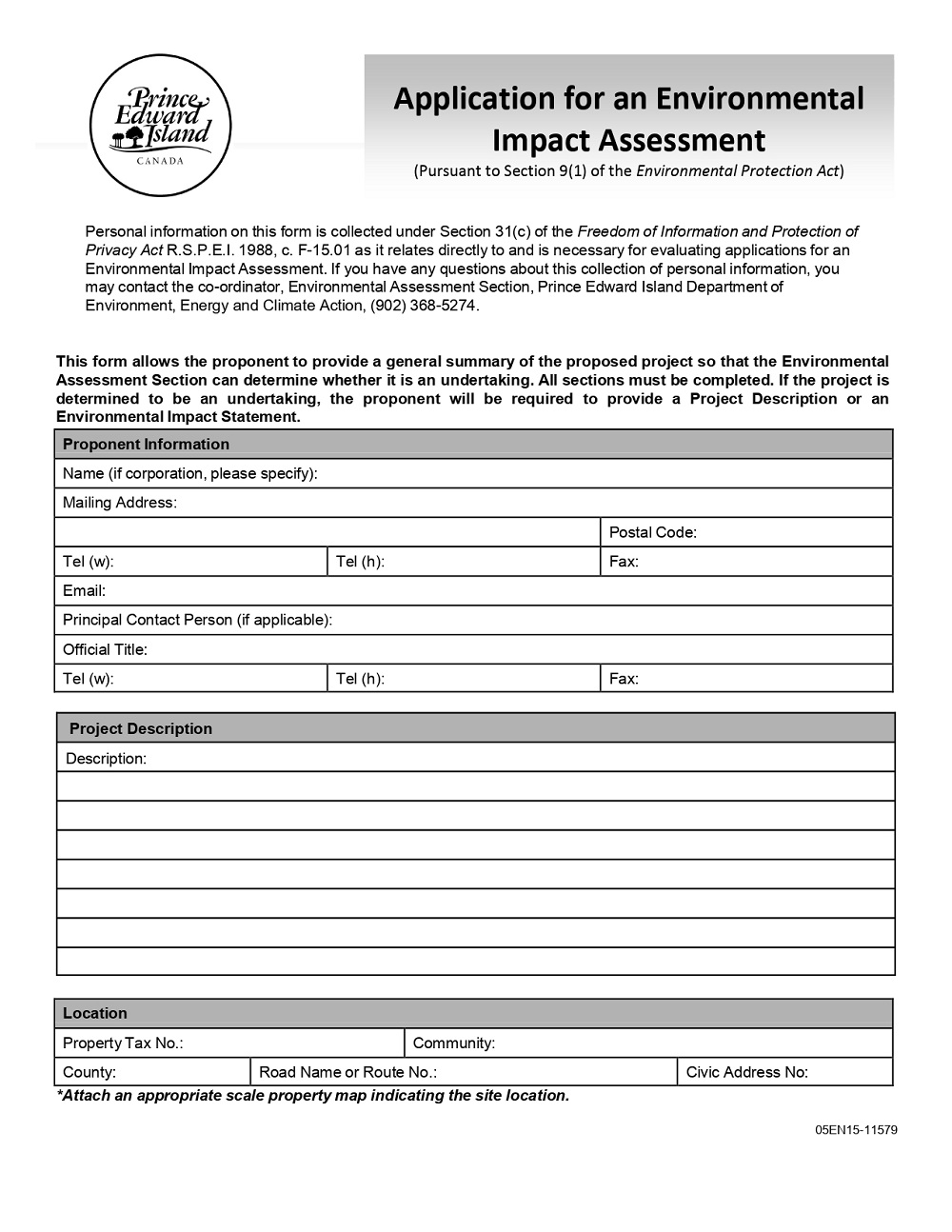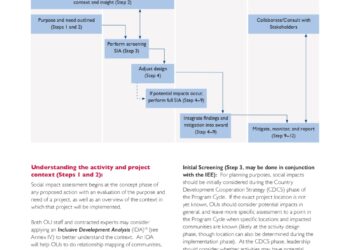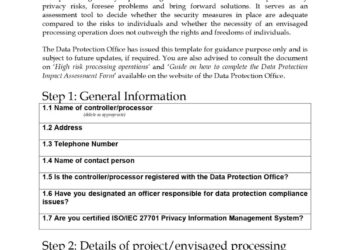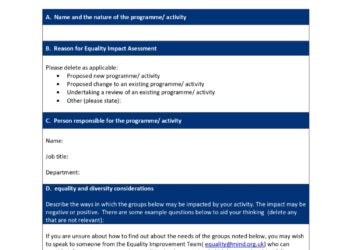The Environmental Impact Assessment (EIA) Template is an important part of determining the potential effects of development projects on local ecosystems. EIA templates provide a necessary framework to thoroughly assess these possible impacts, as well as outline necessary mitigation steps. They are also useful in forming an adaptable structure for each site that can be tailored to fit the various needs and logistics of individual projects.
The presence of standardized template documents ensures transparency, accuracy, and consistency in environmental impact assessments and allows experts more time to focus on the particular environmental issue at hand rather than creating new templates for each project. As a result, developers, environmentalists, and local communities all benefit from these records when it comes to safeguarding the environment.
Environmental Impact Assessment (EIA) Template
Environmental Impact Assessment 01 |
Environmental Impact Assessment 02 |
What is an Environmental Impact Assessment?
An EIA is a process that assesses the potential environmental impacts of any proposed development or project before it can proceed. It examines the potential effects that such projects may have on the environment including biodiversity, water resources, air quality, waste management, land use, and more, and provides recommendations for addressing those impacts. It also provides guidance on how best to manage the effects of any proposed development or project on the environment.
Why is an EIA Important?
An EIA helps ensure that projects or developments will not negatively affect their local environment. It also allows for potential problems to be identified before they become too costly or difficult to address later down the line. An EIA should provide decision-makers with enough information to make well-informed decisions about whether or not a project should go ahead while ensuring that any negative environmental consequences are minimized as much as possible.
When is an EIA Required?
The requirements for an EIA vary from country to country, but generally speaking, they are required for large-scale projects like infrastructure works, mining operations, oil extraction activities, landfill sites, and industrial developments. They may also be required for smaller-scale activities such as housing developments or changes in land use if they are considered likely to have significant environmental impacts. If you’re unsure whether your project requires an EIA you can always contact your local planning authority who should be able to advise you on this matter.
Importance of Eia In Protecting The Environment
Environmental Impact Assessments (EIA) are powerful tools that help us preserve the natural environment. By analyzing the potential consequences of an action or a development project, EIAs allow us to take informed decisions to minimize the harm that could be caused to nature. An EIA is a science-based procedure that looks at what effects certain works or activities will have on the environment, like flora and fauna, soil, air and water quality, landscape, and people’s activity in these areas.
Evaluating all this information helps us identify measures like pollution prevention and proper waste management methods that can reduce damage caused by human intervention. The insights provided by an EIA enable us to decide how exactly each development ought to be carried out so as to reduce its negative environmental impacts. From checking the deforestation of trees to limiting noise pollution due to vehicular traffic, it’s clear that EIAs play a key role in protecting our planet’s delicate balance of life.
How EIA Works
EIA works by identifying the potential environmental impacts of a project before it is approved and then evaluating those impacts to determine if they are acceptable or not. If they are not deemed acceptable, then modifications can be made to the project to reduce or eliminate those impacts. By doing this assessment ahead of time, we can make sure that any project does not have long-term negative environmental effects. It also allows us to identify potential risks associated with a project before it starts, so that appropriate measures can be taken to mitigate or avoid them altogether.
EIA also helps businesses understand their legal obligations when it comes to protecting the environment. It requires companies to conduct research on the local area where their project will take place and identify any areas of concern related to air quality, water quality, land use, etc., as well as any protected species in the area. This ensures that businesses comply with all relevant laws and regulations when undertaking development projects. Additionally, EIA allows people who may be affected by a project (e.g., local residents) to provide input and voice their concerns ahead of time so that they are taken into consideration before any decisions are made about a project moving forward.
The Benefits of EIA
The primary benefit of conducting an EIA is that it enables us to identify potential environmental issues early on and take steps to minimize or avoid them altogether before they have a chance to become larger problems down the line. This helps businesses save money by avoiding costly mistakes associated with the environmental damage caused by poorly planned projects or activities.
Additionally, conducting an EIA helps build trust between stakeholders since everyone involved in a project knows that all potential consequences have been taken into account before anything moves forward. Finally, EIA also helps protect biodiversity by requiring companies to consider how their activities could impact species in the area; this gives us an opportunity to put conservation measures in place if necessary so we can continue protecting our planet’s precious resources for future generations.
Federal Laws and Regulations for EIA in the United States
Environmental Impact Assessments (EIAs) are important tools for evaluating the potential environmental effects of a project before it begins. In the United States, there are many federal laws and regulations related to EIA that must be followed. Let’s take a look at the basics of these laws and regulations.
National Environmental Policy Act (NEPA)
The National Environmental Policy Act (NEPA) is one of the most important pieces of legislation related to EIAs in the US. This act requires federal agencies to consider any potential environmental impacts before making decisions about projects they fund or make use of. When an agency needs to complete an EIA, it must follow a process described in NEPA guidelines. This includes completing an initial assessment, preparing an environmental impact statement if necessary, and issuing a final decision document.
Endangered Species Act (ESA)
The Endangered Species Act (ESA) is another law that impacts EIA in the United States. This law seeks to protect endangered species from harm caused by human activities such as land development and resource extraction. It requires that federal agencies consult with relevant experts when making decisions about projects that could have an impact on endangered species or their habitats. If a project is likely to have significant impacts on endangered species or their habitats, then an ESA consultation must be completed before the project can move forward.
Clean Water Act (CWA)
The Clean Water Act (CWA) is also relevant when it comes to EIAs in the US. This act sets standards for water quality and aims to protect surface waters from pollution caused by human activities such as industrial development, agriculture, and urban runoff. The CWA requires that any projects which involve discharging pollutants into surface waters must obtain a permit from the relevant regulatory agency before beginning work on those projects. If a project may have significant impacts on water quality, then an EIA should be completed prior to obtaining a permit under this act.
What Does An EIA Involve?
An EIA involves analyzing the direct and indirect environmental impacts of a proposed project or activity. This includes looking at how the project will affect air quality, soil, water resources, biodiversity, ecology, landscape, and visual amenity as well as human health. It also takes into account other aspects such as cultural heritage sites and archaeological remains that may be impacted by the proposed project or activity.
An EIA is an iterative process that involves gathering data from various sources including field studies, laboratory tests, public consultation, stakeholder engagement, desktop research, interviews with experts, legal reviews, economic evaluations, feasibility assessments, risk analysis, impact modeling, and scenario testing. The data collected during this process is then used to develop mitigation measures if required to reduce any adverse impacts on the environment prior to the implementation of the project or activity.
The overall objective of an EIA is to ensure that all potential environmental impacts are identified early on in order to minimize their severity or prevent them together where possible. This helps create more sustainable development projects which are beneficial for both humans and nature alike in the long term.
How Do You Conduct an EIA?
Conducting an Environmental Impact Assessment (EIA) is essential for any project which could potentially cause environmental harm. An EIA allows for a full appraisal of the potential impacts of a project, identifying risks and necessary mitigations before construction begins. The process typically involves comprehensive analysis and stakeholder consultation; this allows the assessing team to accurately predict the environmental impact that a project may have.
Depending on the size and type of project, the EIA may cover different elements such as soil, air, water, climate change, biodiversity, etc. It is also important to consider pathways which pollutants or resources could move through once identified, preventative measures can be taken to ensure that these risks are managed safely and effectively. Ultimately, an effective EIA will provide a roadmap to ensuring the successful completion of projects with minimal environmental harm.
Here’s a step-by-step guide to conducting an EIA.
Research & Planning
The first step in conducting an EIA is research and planning. This is where you will investigate the proposed development, its potential environmental impacts, what kind of data needs to be collected and analyzed, who needs to be consulted, and the methods used for evaluating the data. It’s important to make sure all stakeholders are involved in this process from the start so everyone agrees on what should be included in the assessment and how it should be conducted.
Data Collection & Analysis
The next step is collecting data about the environment surrounding your proposed development site. This could include anything from air quality measurements to soil analysis or water samples. Once you have gathered all your data, it’s time to analyze it and draw conclusions as they relate to your proposed project. Be sure that all stakeholders are involved in this process as well, their input will help ensure that all relevant information is taken into account when making decisions about the project moving forward.
Mitigation & Monitoring
Once you have analyzed all available data, it’s time to consider mitigation measures for any potential impacts identified. These may include things like habitat protection plans or pollution control measures that can help minimize any negative impacts on the environment caused by your development project. It’s also important for developers to monitor their progress throughout this process not just at completion to ensure that these mitigation measures are effective and any potential risks are identified early on.
Benefits of Using an EIA Template
Using an EIA template has many benefits. Here are just a few ways that it can help your business succeed:
• Environmentally Friendly Practices – Answering the questions in the EIA template helps you identify potential risks to the environment caused by your operations. Once identified, you can then take steps to mitigate any negative impacts or implement environmentally friendly practices into your operations. This helps ensure that your business is compliant with all applicable regulations and minimizes its effect on the environment.
• Cost Savings – Answering the questions in an EIA template also helps identify potential cost savings opportunities for your business. For example, if you find that certain processes or activities are generating unnecessary costs for your business due to wasted resources or inefficient practices, then you can make changes to reduce those costs and improve profitability.
• Increased Efficiency – Answering the questions in the EIA template helps pinpoint areas where your processes could be improved or streamlined for greater efficiency. This can lead to increased productivity and improved customer satisfaction levels as well as reduced costs for your business overall.
Types of EIA Templates Available
There are various types of templates available depending on your business’s specific needs. There are templates designed specifically for certain industries such as construction or mining, while others may be more general in nature and suitable for any type of project or development. Additionally, some templates may require additional customization in order to accommodate different types of projects or locations. When selecting a template, it’s important to choose one that meets your specific requirements so you can get accurate results from your assessments.
How To Use EIA Templates Effectively
Effective use of EIA (Environmental Impact Assessment) templates is an important tool when working with the environment. By collecting data on environmental issues, it is possible to make informed decisions that are beneficial both to the environment and society as a whole. When constructing individual EIA templates, some factors should be taken into account in order to ensure that they are organized and easy to read.
Information should be thoroughly analyzed before determining its relevance and importance, and unnecessary items should be excluded accordingly. Research findings must also be correctly interpreted and reported so that any meaningful conclusions can be drawn from the data. Furthermore, communication with external stakeholders is paramount during this process; they often offer insights that are invaluable for making informed decisions. With these tips in mind, an effective EIA template can certainly be produced.
Why Compliance & Enforcement are Essential
Compliance with the laws that govern EIAs is important in order to ensure that projects are carried out without causing harm to the environment. By enforcing these regulations through legal action when necessary, violators are held accountable for their actions if they fail to comply with EIA requirements. This helps protect communities from potential risks posed by projects and encourages companies to follow best practices when it comes to environmental protection.
How Compliance & Enforcement Help Protect Our Planet
Enforcement of laws regarding EIAs is essential in order to maintain healthy ecosystems around the world. Without proper compliance and enforcement of these laws, companies might be tempted to ignore best practices when it comes to their operations or projects leading to further degradation of our planet’s resources. By ensuring that businesses comply with these regulations, we can help protect our environment from further damage while also encouraging responsible stewardship of our planet’s precious resources.
Conclusion
The conclusion of an environmental impact assessment is an incredibly important part of the EIA process. It provides decision-makers with detailed information about how best to move forward with their plans while minimizing any negative impacts on local environments and communities. By taking into account all available data during their analysis, EIAs help ensure that proposed projects do not cause irreparable damage to our planet’s delicate ecosystems. Ultimately, this makes them a valuable tool for businesses and governments alike in helping them make informed decisions about how best to move forward with their plans responsibly.


